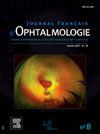gpt - 40和GPT-4在眼科住院医师考试问题上的双语比较——英语和法语回答分析
IF 1.1
4区 医学
Q3 OPHTHALMOLOGY
引用次数: 0
摘要
目的评价和比较GPT-4和更新的gpt - 40在英语和法语眼科委员会考试中的表现,评估不同亚专科和问题格式的准确性,重点是图像分析。方法采用GPT-4和gpt - 40对涵盖12个亚专业和多种内容的认证级委员会考试的600个选择题数据集进行仔细翻译,并用英语和法语进行测试,并根据考试年份、问题类型和各种图像输入的处理进行分析,以确保全面评估。以2021-2023年人类居民的表现为比较对象。统计分析,包括χ2检验和优势比计算,比较了不同模型的准确性。结果英语gpt - 40的准确率最高(74.5%),接近人类居民的表现,而法语gpt - 40的准确率为67.4%。GPT-4在英语和法语中的得分分别为62.3%和64.4%,均显著低于gpt - 40 (P < 0.001)。基于文本的问题在所有模型中都显示出更高的准确率,英语gpt - 40以82.5%的准确率领先。基于图像的问题显示,英语和法语gpt - 40的表现相似,两者都优于GPT-4模型。结论gpt - 40在英语和法语中均优于GPT-4,强调了其在两种语言中的眼科应用潜力。尽管仍然存在局限性,特别是在基于图像的诊断和特定语言的细微差别方面,但这些模型正在为人工智能在教育和患者护理方面支持和增强人类专业知识的未来铺平道路。ObjectifÉvaluer比较了GPT-4和新gpt - 40的性能,比较了GPT-4的性能,比较了GPT-4的性能,比较了GPT-4的性能,比较了GPT-4的性能,比较了GPT-4的性能,比较了GPT-4的性能,比较了GPT-4的性能,比较了GPT-4的性能,比较了GPT-4的性能,比较了GPT-4的性能,比较了GPT-4的性能,比较了GPT-4的性能,比较了GPT-4的性能,比较了GPT-4的性能,比较了GPT-4的性能。MethodesUn合奏600问题选择倍数问题d 'examens de认证,couvrant 12 sous-specialites潜水员contenus,疾病soigneusement traduit等证人在英语和法语的l 'aide de GPT-4 GPT-4o,用一个分析par annee d 'examen de问题类型等不同类型d形象安勤科技,assurant一个评估完成。Les performance des internes humains (2021-2023) not servi de remacry。它对统计数据进行分析,包括χ2检验和χ2计算,不允许比较不同模型的计算精度。r3 -4 - 1 - 1 - 3 - 1 - 3 - 1 - 3 - 1 - 3 - 1 - 3 - 3 - 1 - 3 - 3 - 3 - 3 - 3 - 3 - 3 - 3 - 3 - 3 - 3 - 3 - 3 - 3 - 3 - 3 - 3 - 3 - 3 - 3 - 3 - 3 - 3 - 3 - 3 - 3 - 3 - 3 - 3 - 3 - 3 - 3 - 3 - 3 - 3 - 3 - 3 - 3 - 3 - 3 - 3 - 3 - 3 - 3 - 3 - 3 - 3 -4GPT-4在英语和法语中分别为62,3 %和64,4 %,说明了其对本文章由计算机程序翻译,如有差异,请以英文原文为准。
Bilingual comparison of the performance of GPT-4o and GPT-4 on ophthalmology residency examination questions – Analysis of responses in English and French
Objective
To evaluate and compare the performance of GPT-4 and the newer GPT-4o in both English and French on ophthalmology board examination questions, assessing accuracy across various subspecialties and question formats, with a focus on image analysis.
Methods
A dataset of 600 multiple-choice questions from certification-level board examinations covering 12 subspecialties and diverse content was carefully translated and tested in both English and French using GPT-4 and GPT-4o with analyses by examination years, question type, and processing of various image inputs, ensuring a comprehensive evaluation. Performance of human residents from 2021–2023 was used for comparison. Statistical analyses, including χ2 tests and odds ratio calculations, compared accuracy across models.
Results
GPT-4o in English achieved the highest accuracy (74.5%), approaching human resident performance, while its French counterpart scored 67.4%. GPT-4 scored 62.3% and 64.4% in English and French, respectively, both significantly lower than GPT-4o (P < 0.001). Text-based questions showed consistently higher accuracy across all models, with English GPT-4o leading at 82.5%. Image-based questions revealed similar performance for English and French GPT-4o, both outperforming the GPT-4 models.
Conclusions
GPT-4o outperforms GPT-4 in both English and French, underscoring its potential for ophthalmology use in both languages. While limitations remain, particularly in image-based diagnostics and language-specific nuances, these models are paving the way for a future where artificial intelligence supports and enhances human expertise in both education and patient care.
Objectif
Évaluer et comparer les performances de GPT-4 et du nouveau GPT-4o en anglais et en français sur des questions tirées d’examens de certification en ophtalmologie pour l’internat, en analysant leur précision à travers différentes sous-spécialités et formats de questions, avec une attention particulière à l’analyse d’images.
Méthodes
Un ensemble de 600 questions à choix multiples issues d’examens de certification, couvrant 12 sous-spécialités et divers contenus, a été soigneusement traduit et testé en anglais et en français à l’aide de GPT-4 et GPT-4o, avec une analyse par année d’examen, type de question et différents types d’images évaluées, assurant une évaluation complète. Les performances des internes humains (2021–2023) ont servi de référence. Des analyses statistiques, incluant des tests du χ2 et des calculs de rapport de cotes, ont permis de comparer la précision des modèles.
Résultats
GPT-4o en anglais a démontré la meilleure précision (74,5 %), se rapprochant des performances des internes humains, tandis que sa version française a atteint 67,4 %. GPT-4 a obtenu 62,3 % en anglais et 64,4 % en français, des résultats significativement inférieurs à GPT-4o (p < 0,001). Les questions textuelles ont montré une précision constamment plus élevée pour tous les modèles, GPT-4o en anglais étant en tête avec 82,5 %. Les questions accompagnées d’images ont révélé des performances similaires pour GPT-4o en anglais et en français, tous deux surpassant le modèle GPT-4.
Conclusions
GPT-4o surpasse GPT-4 en anglais et en français, soulignant son potentiel d’utilisation en ophtalmologie dans les deux langues. En dépit des limites persistantes, notamment dans les diagnostics basés sur les images et les nuances propres aux langues, ces modèles ouvrent la voie à un futur où l’intelligence artificielle soutient et améliore l’expertise humaine, tant dans l’éducation que dans le soin au patient.
求助全文
通过发布文献求助,成功后即可免费获取论文全文。
去求助
来源期刊
CiteScore
1.10
自引率
8.30%
发文量
317
审稿时长
49 days
期刊介绍:
The Journal français d''ophtalmologie, official publication of the French Society of Ophthalmology, serves the French Speaking Community by publishing excellent research articles, communications of the French Society of Ophthalmology, in-depth reviews, position papers, letters received by the editor and a rich image bank in each issue. The scientific quality is guaranteed through unbiased peer-review, and the journal is member of the Committee of Publication Ethics (COPE). The editors strongly discourage editorial misconduct and in particular if duplicative text from published sources is identified without proper citation, the submission will not be considered for peer review and returned to the authors or immediately rejected.

 求助内容:
求助内容: 应助结果提醒方式:
应助结果提醒方式:


